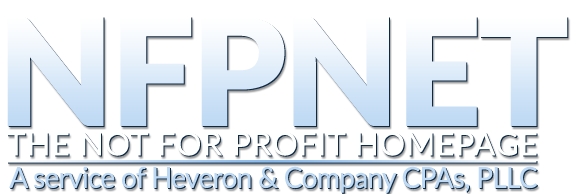Measuring and Reporting Nonprofit Outcomes
In its ongoing effort to help auditors, our national professional society, the AICPA, annually provides us with an Audit Risk Alert, which is a summary of key legislation and other matters that are currently impacting the nonprofit world. This is so we can understand your environment and adjust our procedures accordingly.
This year one of the areas that was cited was measuring effectiveness. The alert said that donors, regulators and rating agencies, as well as your annual federal reporting form (990, 990EZ) are requiring more performance reporting and nonprofits are looking for new ways to present results. They said that charities are using fact sheets, third-party studies and visual illustrations of how programs are designed, monitored and evaluated.
In this day and age, you need to do performance reporting. How can you do it well and efficiently so you don’t have to take too much time away from performance?
The United Way of America and our local United Way have been focused on outcome measures for many years. One useful resource can be found on Strengthening Nonprofits’ Resource Library. Although guidance on measuring outcomes was developed years ago, it remains as a valuable resource to nonprofits.
Their training uses some United Way descriptions including:
- “outcome measurement” – the regular systematic tracking of the extent to which program participants experienced benefits or changes that were intended, and
- “outcome” – not “how many worms the bird feeds its young, but how well the fledgling flies”.
As you plan your outcome measurement process you should consider:
- what you intend the impact to be
- what will it look like if/when you achieve the desired outcome
- what behaviors need to change to achieve that outcome
- what must people know or do so that behavior can change
- what training is necessary, and
- what resources are required to achieve desired outcomes
Strengthening Nonprofits training provides sample logic models that describe
- inputs (time, money, equipment, and facilities)
- activities (services, workshops, publications,)
- outputs (clients, caregivers, and family that are reached)
- initial outcomes (change in knowledge, skills, motivation, awareness and attitude)
- intermediate outcomes (change in behavior, practices and procedures)
- long-term outcomes (change in social, economic and political conditions and the environment)
There are personal and financial costs of focusing on outcome measurement, but the National Council of Nonprofits states that “in an environment of increasingly limited resources, those nonprofits that can demonstrate that they are truly making an impact will be the ones most likely to attract resources and talent, and therefore be the most sustainable”.
